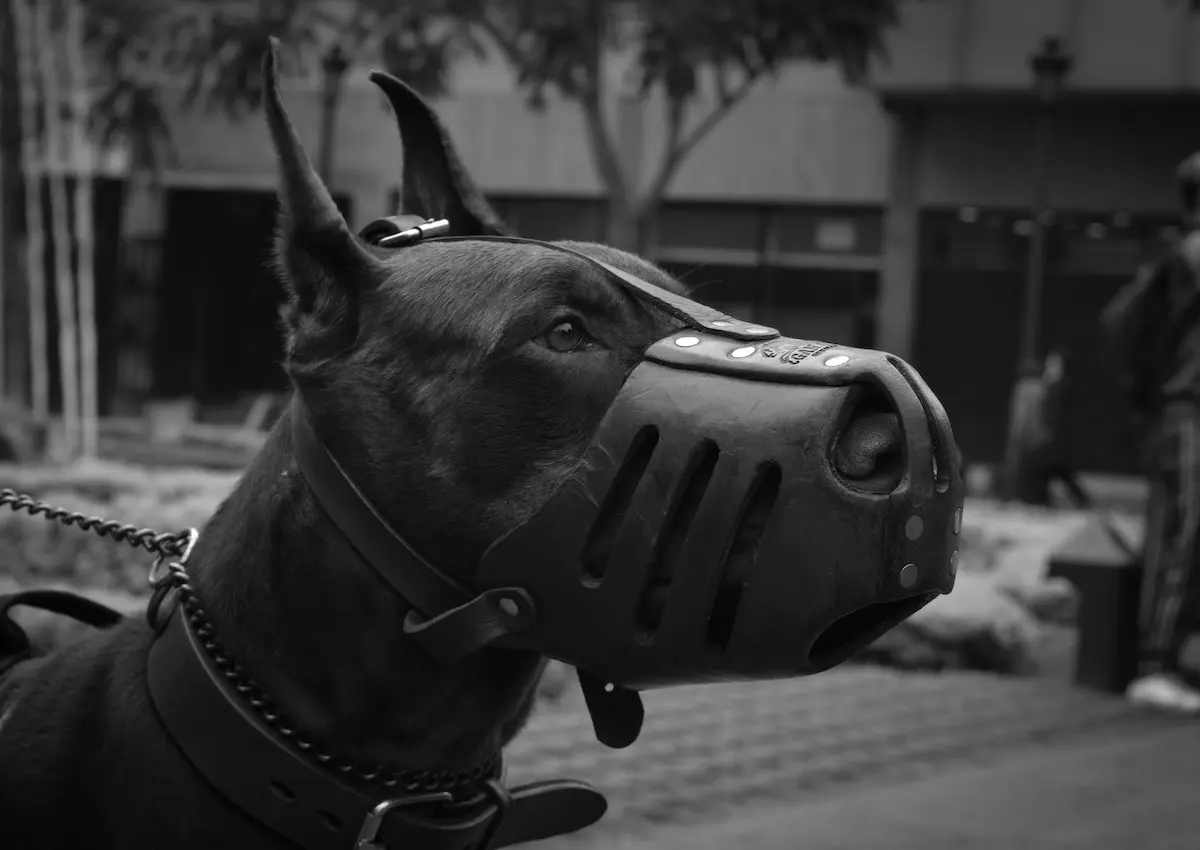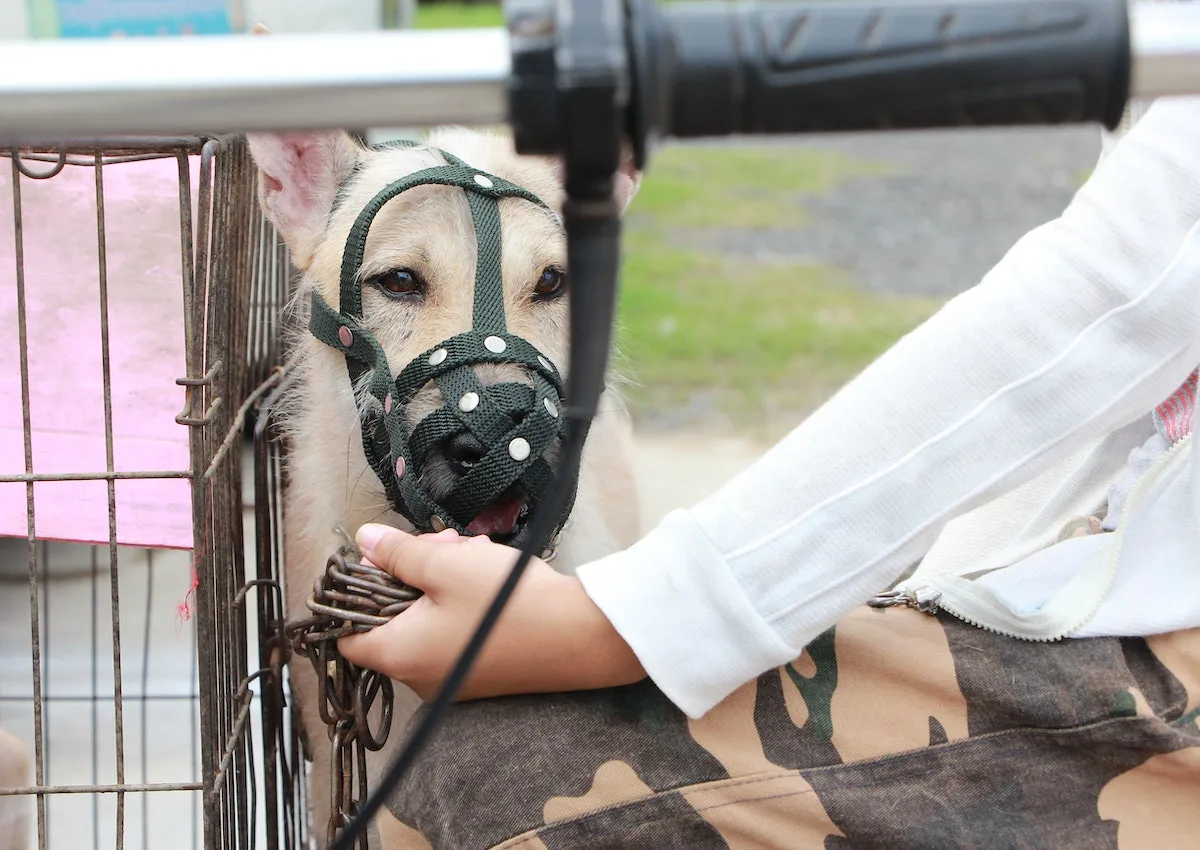Dog muzzles can be a practical and compassionate tool when used appropriately. Whether you have a pet that’s prone to biting, a breed that’s subject to breed-specific legislation or a dog that gets too enthusiastic around treats, a muzzle can come in handy. However, the most crucial aspect is ensuring the muzzle is comfortable and safe for your canine friend.

Why use a dog muzzle?
Before diving into our best muzzle recommendations, it’s essential to understand why you might need a dog muzzle:
- Safety — If your dog has a history of aggression or is undergoing behavior modification training, a muzzle can prevent harm to others.
- Dog aggression — Sometimes a muzzle can assist to safely remediate dog aggression issues.
- Healthcare— Some dogs don’t appreciate being prodded or examined, even by vets. A muzzle ensures everyone’s safety during these moments. If you have a dog that has undergone protection dog training, this is a must.
- Grooming — Some pups can get nippy during grooming sessions and don’t enjoy cutting their nails or getting bathed. A muzzle can keep the groomer safe without compromising your dog’s comfort.
- Compliance with laws — Certain areas have breed-specific legislations requiring muzzles on specific breeds when in public.
- Emergency situations — After an accident or injury, dogs may react aggressively out of fear or pain. A muzzle can be a precaution in such scenarios.
- Protection dog training — A muzzle can be a valuable tool for protection dog training or dog bite training to help bridge the gap between equipment and reality.
Types of dog muzzles
There are many variations of dog muzzles and each has a certain purpose or use. You may choose to use multiple muzzles for different scenarios.
For example, a vet muzzle is a soft nylon muzzle that allows the dog’s mouth to be slightly opened and exposed allowing the ingestion of oral medication. Whereas a leather agitation muzzle surrounds the dog’s mouth entirely and is utilized during protection training.

Best muzzles for dogs
Here is a breakdown of a variety of different muzzle types including their specific features.
Basket Muzzle
- This type of muzzle looks like a basket that covers the dog’s mouth.
- Made from various materials, such as plastic, wire, leather or rubber.
- Allows dogs to pant, drink and accept small treats.
- Ideal for longer durations because they don’t restrict breathing or panting.
Soft Muzzle (or Sleeve Muzzle)
- Typically made of fabric, such as nylon or mesh.
- Wraps around the dog’s mouth and can hold it closed or allow it to be slightly open.
- More restrictive than basket muzzles, so they’re suitable for shorter periods.
- Often used in grooming or veterinary situations.
Short-Snout Muzzle
- Designed for brachycephalic breeds (e.g., Bulldogs, Pugs) which have short or flat faces.
- Looks more like a mask and covers the entire face with an opening for the eyes.
- Made of breathable mesh or fabric.
Leather Muzzle
- Made of sturdy leather and sometimes combined with wire for additional support.
- Used primarily for aggressive dogs or during certain types of training.
- Allow for panting but might restrict drinking.
Occlusion Muzzle
- Holds the dog’s mouth shut tightly.
- Used mainly for short procedures, like injections.
- Dogs cannot pant, drink, or bark with this type of muzzle, so it’s for very short-term use only.
Plastic Muzzle
- Made of rigid plastic.
- Some designs are similar to basket muzzles, while others are more restrictive.
Greyhound or Racing Muzzle
- Specifically designed for racing greyhounds.
- Made of lightweight plastic and allows for maximum airflow.
- Covers the entire face with large openings for the eyes.
Homemade or Improvised Muzzle
- Created using bandages or fabric in emergency situations.
- Not ideal for extended use but can work temporarily if a dedicated muzzle isn’t available.

Tips for introducing a muzzle to your dog
- Make it Positive: Use treats and praise to create a positive association with the muzzle. I always condition a dog to muzzle using positive reinforcement and clicker training. Start by holding the muzzle in your hand and allow your dog to smell it. Immediately mark and reward with a treat when they smell or put their snout near it. Another method is to hold the muzzle and just feed your dog out of it marking/feeding every time they stick their snout in the muzzle. Hundred of repetitions of this and your dog will be operantly conditioned to find pleasure in wearing their muzzle.
- Go Slow: Don’t rush the process. Start with short intervals and gradually increase the duration. It can take several weeks before actually affixing the muzzle to the dog. Build a strong positive experience with the muzzle process and you won’t have to chase your dog around and wrestle a muzzle on them.
- Ensure a Proper Fit: A muzzle should be snug but not tight. Your dog should be able to pant and drink with ease if the muzzle allows it. Remember, a dog naturally dislikes a muzzle because it removes their primary defense capability which is biting.
Safety reminders
- Never use a muzzle as a punishment tool. It can make your dog fearful or aggressive.
- Avoid leaving a muzzled dog unattended. They might try to remove it and can injure themselves. Leaving a muzzle on a dog could also lead to heatstroke in certain conditions.
- Ensure your dog doesn’t overheat. Panting is the primary way dogs cool down, so always use breathable muzzles during physical activities.
Which is the best muzzle for dogs?
Finding the best muzzle for your dog is a mix of understanding their needs and ensuring their comfort. Remember, a muzzle isn’t a solution to behavioral problems but a tool that can aid in safety and training. Always consult with a veterinarian or a canine behaviorist if you’re unsure about your choice.

